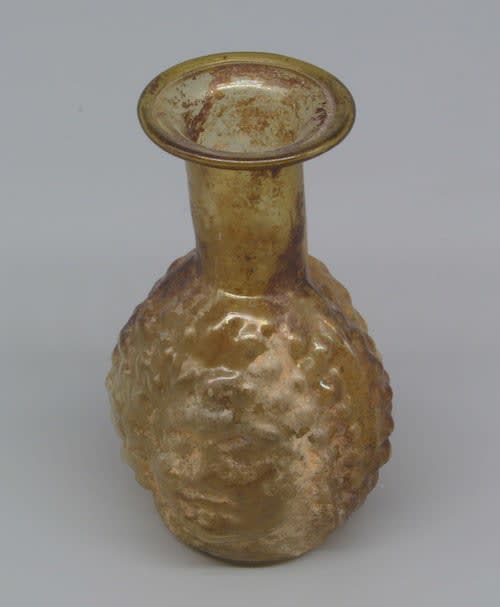Roman Double-Head Glass Flask, 2nd Century CE - 3rd Century CE
Glass
2 x 3.1
SF.265
Further images
The body is blown into a two-part mould of two vertical sections, probably open at the base. The mould is concealed in the hair at the junction of the heads....
The body is blown into a two-part mould of two vertical sections, probably open at the base. The mould is concealed in the hair at the junction of the heads.
The neck is cylindrical and the rim is everted.
Head-shaped flasks appear in the Greek ceramic repertoire starting in the Archaic period. The method of mould-blowing proved particularly suited to the manufacture of vessels of this type.
The neck is cylindrical and the rim is everted.
Head-shaped flasks appear in the Greek ceramic repertoire starting in the Archaic period. The method of mould-blowing proved particularly suited to the manufacture of vessels of this type.





